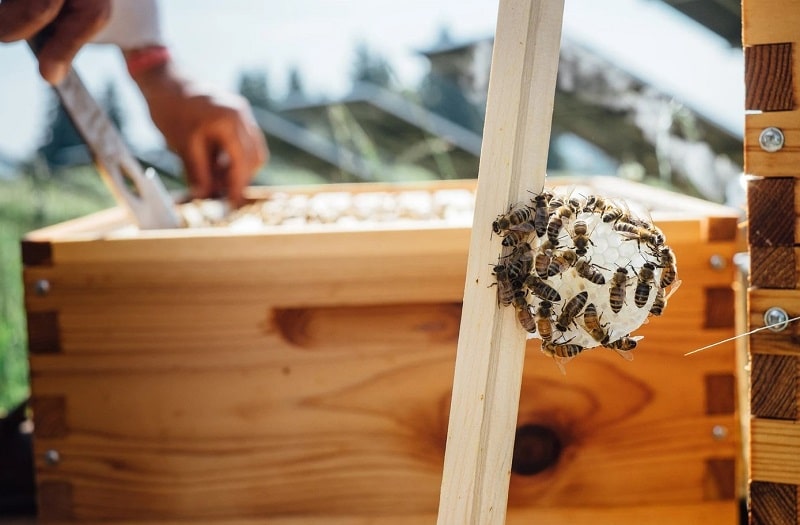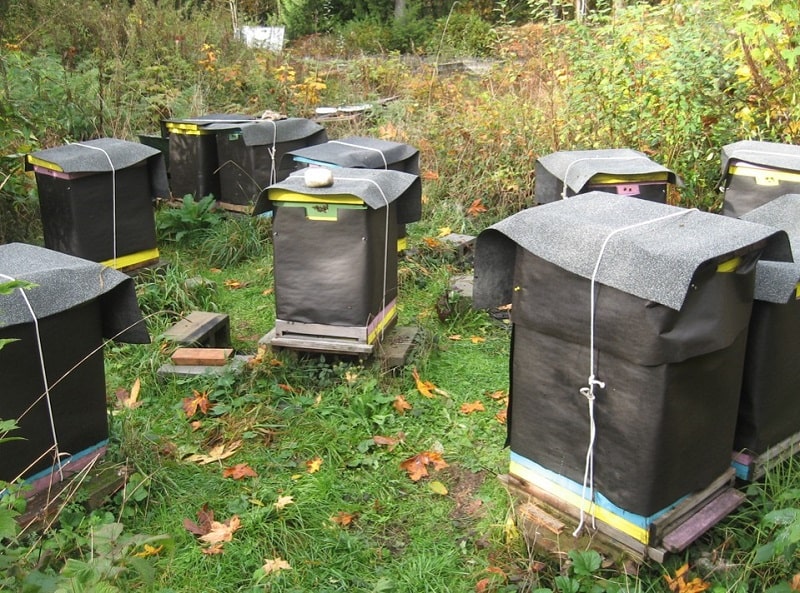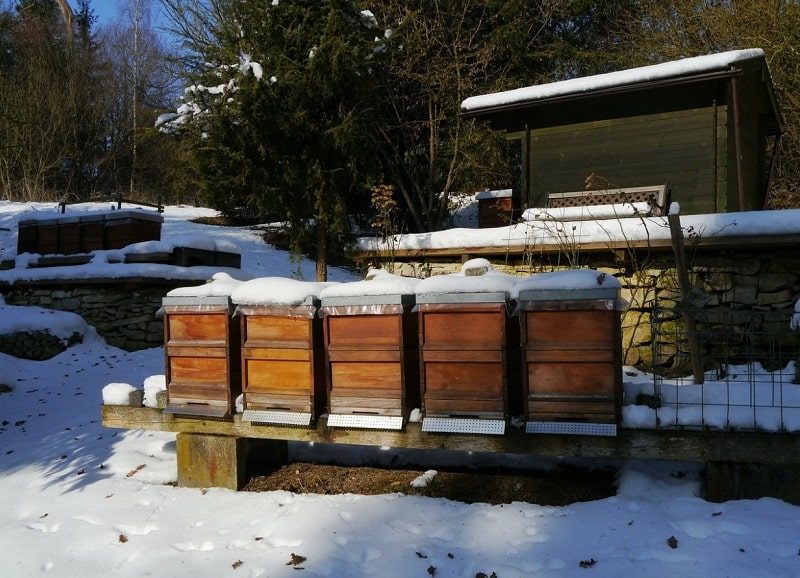Winter may be a stressful season for beekeepers. How can beekeepers assure that their colonies will survive winter in the face of frigid temperatures and a restricted food supply?
Bees spend the entire year preparing for the harsh winter months. They store honey in order to devour it and generate heat with their bodies. We can help them stay warm by wrapping or insulating beehives throughout the winter.
When should you wrap your bee hive?
To survive the winter months, bees must keep the core temperature of the winter cluster stable. We propose that you wrap or insulate your hive around Thanksgiving weekend (mid-October). It is usually the best time to finish a project. The weather has cooled enough that you will not overheat your hive on warmer fall days. Wrapping/insulating too soon might cause the hive to overheat, causing your bees to work harder to cool it down and utilize more of the honey reserves.

Explain the difference between a wrapped and an insulated hive
A wrapped hive is surrounded by a layer of black roofing felt, which allows it to benefit from solar gain on sunny days. It does not prevent heat loss as effectively as insulation does. It can, however, increase the temperature inside the hive by a few degrees.
Insulation works by slowing the flow of heat. To be clear, the bees in the cluster are not attempting to heat the entire hive, but only the cluster. Even though the bees are not attempting to heat the entire hive, the colder the surrounding temperature, the more the heat created by the cluster will be wicked away. In this situation, the beekeeper inserts some material around the hive, usually foam-board these days, to help retain the heat created by the cluster inside the hive.
How to wrap a bee hive
Here is my simple technique for wrapping:
- Cut a piece of 15# roofing felt into an 80′′ long piece. Its height should be proportional to the quantity of boxes that you have between your bottom board and telescoping cover. You can leave the option of opening the top of your hives to check on the girls during the winter.
- A 1/2′′ pan-head screw, or another small screw with a washer, and a 3/4′′ X 3/4′′ piece of wood roughly the same length as the height of the roofing felt are required. It’s also a good idea to drill holes where these screws will go to prevent the wood from breaking.
- Then, put the pan head screw into one end of the felt towards the top and side of the hive to hold it in place as you wrap the feeling around. The felt should overhang a few inches once wrapped around. The 3/4′′ piece of wood is then screwed into place along the overlap.
- That’s all! It simply takes a minute or two. The advantage of this method over stapling is that you can reuse your wrapping next year. It is also a lot faster and easier than ripping the felt off in parts the following spring.

Insulating beehives for winter
If you do not want to wrap your entire hive, or if your area is not too cold, you can insulate the top of the hive. This can be accomplished with a simple piece of styrofoam. To assist the hive retain heat, place the styrofoam under the telescoping cover.
Only if you live in a colder region should you wrap or insulate your hive. Some beekeepers, however, prefer to leave their hives uncovered. They are concerned that wrapping or insulating beehives in winter will make the hive too warm, causing the bees to become more active and hence deplete their honey supplies faster.
It is entirely up to you whether to insulate your beehives for the winter. To select what is ideal for you, you must consider the climate of your area as well as the strength of your colony.
What to do with beehives in winter
- Keep an eye on the hive’s entrance. Check that the hive entrance is not obstructed by snow or debris.
- Make sure your bees have enough food. Bees consume about 60 pounds of honey during the winter. When harvesting honey, be sure to leave enough for your bees to eat.
- Feed the bees. While the bee colony has conserved honey for the winter, you also can feed your bees to make sure they have enough food. For this reason, sugar syrup, fondant, or pollen patties are frequently employed.
- Move your bees to a more sunny location. This will help the hive stay warm throughout the day. Ideally, you want them in a location where there is not a lot of wind. A fence or trees near your beehives can help with this.

Note about humidity
Too much humidity in a hive can be fatal, thus it is critical to check the temperature and humidity levels of the hive throughout the winter. The Brood Minder Internal Hive Monitor is a fantastic instrument for monitoring the humidity in a hive. It is a little, thin gadget that sits on top of the brood or super frames.
As it reaches the top of the hive, the monitor captures heat and humidity. The Hive Monitor’s biggest feature is that it provides data directly to your smartphone. This data is also sent anonymously to a global base to assist researchers in learning more about assisting bees.
Conclusion
In the winter, bees form a hive to keep warm. In colder climates, bees may require assistance in keeping heat. This can be accomplished by insulating/wrapping beehives for the winter. Make sure your hive is well air, since excessive humidity and condensation can be harmful to a colony.
